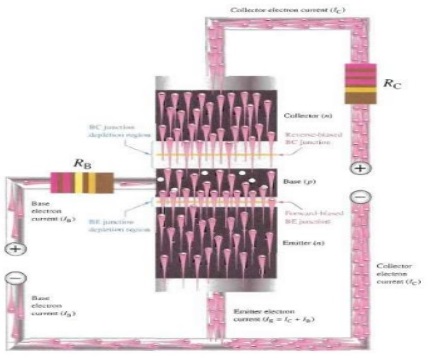What is Electronics?
Electronics can be defined as the science of how to control electric energy, electrical energy is the form of energy in which the electrons have a fundamental role. The field of basic electronic also deals with electrical circuits which involve active electrical components such as vacuum tubes, transistors, diodes and integrated circuits, and associated passive electrical components and interconnection technologies.
An electronic engineer mostly will work with a number of basic electronics components when building electronic circuits, including resistors, capacitors, diodes, transistors, and integrated circuits.
So to easily understand the basic concepts brief overview of the functions of each of these basic electronic components can be explained as below:
Part of Electronics Components
- Transformer (Trafo)
- Integrated Circuits (IC)
- Multimeter/Ohmmeter
- Capacitor
- Resistor
- Diode
- Light-Emitting Diodes (LED)
- Transistors
Transformer (Trafo)
As every electronics engineer understands that transformer is an electrical device that transforms electrical energy in two or more circuits under the principle of electromagnetic induction. Generally transformers are used to increase or decrease the voltages of alternating current in electric power applications. Transformers can thus be designed to efficiently change AC voltage from one voltage level to another within power networks. Transformers also can be used in television, computer, and electric station etc.
A transformer is a static electrical device that transfers energy by inductive coupling between its winding circuits. A varying current in the primary winding creates a varying magnetic flux in the transformer’s core and thus a varying magnetic flux through the secondary winding. This varying magnetic flux induces a varying electromotive force (emf) or voltage in the secondary winding.
Transformers are thus used to vary the relative voltage of circuits, which, in some cases, also isolates them. Transformers range in size from thumbnail-sized used in microphones to units weighing hundreds of tons interconnecting the power grid. A wide range of transformer designs are used in electronics and electric power applications.
Integrated Circuits (IC’s)
Integrated circuit, another name for a chip, is a small electronic device made out of semiconductor material. The first IC was developed in the 1950s by Jack of Texas Instruments and Robert Noyce of Fairchild Semiconductor. ICs are used for a variety of devices, including microprocessors, audio and video equipment, automobiles, and other home appliances.

Multimeter/Ohmmeter
A multimeter, also known as a Volt-Ohm meter, is an electronic measuring instrument that combines several measurement functions in one unit. The device is very useful and commonly possessed by every electrician during testing and maintenance works.
Capacitors
Capacitor is an integral component of basic electronics which is a passive two-terminal electrical component used to store electrical energy temporarily in an electric field. Capacitors come in several different varieties, the two most common being ceramic disk and electrolytic. The amount of capacitance of a given capacitor is usually measured in micro-farads, abbreviated μF.
Capacitors are probably the second most commonly used component in electronic circuits. A capacitor is a device that can temporarily store an electric charge. Capacitors come in several different varieties, the two most common being ceramic disk and electrolytic.
SI Unit : Farad (F)
Capacitance : C=Q/V
Resistors
Resistor is passive-two electrical component that implements electrical resistance as a circuit element. Resistors act to reduce current flow, and, at the same time, act lower voltage levels within circuits. If you put resistors next to a penny, you get an idea of how small they are.
Diodes
Diode is a two-terminal electronic component with asymmetric conductance; it has low resistance to current in one direction, and high resistance in the other. The most common function of a diode is to allow an electric current to past in one direction, while blocking current in the opposite direction.
Light-Emitting Diodes (LED’s)
A light-emitting diode (or LED) is a special type of diode that emits light when current passes through it.
Transistors
Transistor is a semiconductor device used to amplify and switch electronic signals and electrical power. It is composed of semiconductor material with at least three terminals for connection to an external circuit.
Inductor
An inductor, also called a coil or reactor, is a passive two-terminal electrical component which resists changes in electric current passing through it. It consists of a conductor such as a wire, usually wound into a coil. When a current flows through it, energy is stored temporarily in a magnetic field in the coil. When the current flowing through an inductor changes, the time-varying magnetic field induces a voltage in the conductor, according to Faraday’s law of electromagnetic induction, which opposes the change in current that created it.
SI Unit of inductance : Henry (H)
